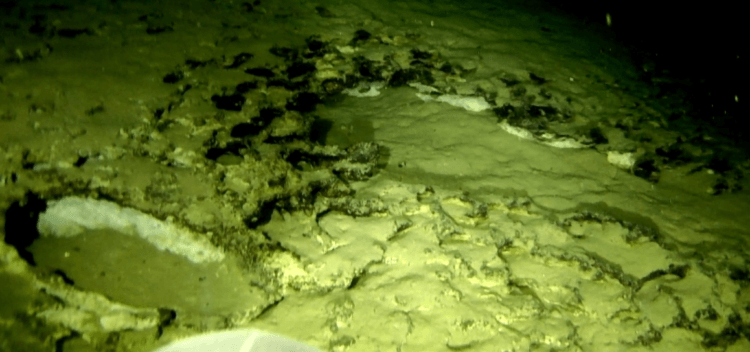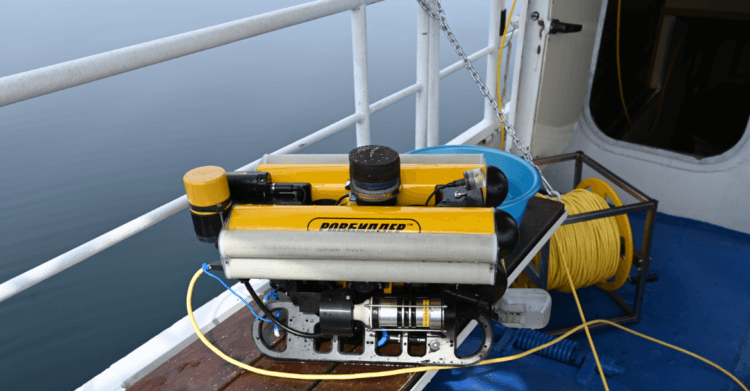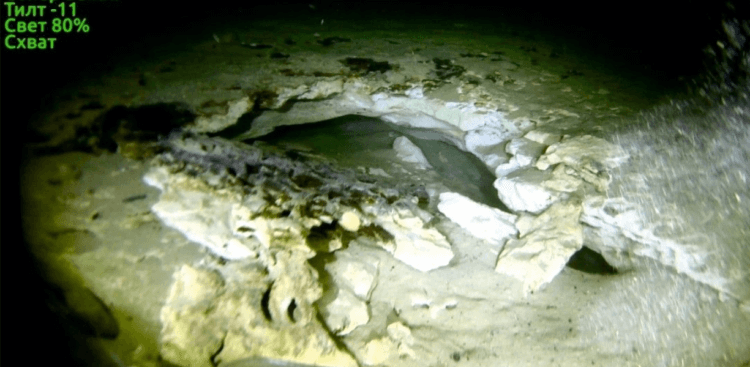Lake Baikal is famous for being the deepest in the world. Its depth reaches 1642 meters, which is comparable to ocean depths. For this reason, the bottom of the lake is not very well studied. However, now researchers have been able to examine it in detail thanks to an underwater robot. The bottom turned out to be full of cracks and deformations caused by previously unknown mud volcanoes. They are located near a fault on the lake shore known as the North Baikal Fault. The depth where they were found is relatively small – from 100 to 165 meters, which surprised scientists. According to the researchers, signs of recent eruptions may indicate that the fault is active.

Mud volcanoes have been discovered at the bottom of Lake Baikal. Photo source: sbras.info
What are mud volcanoes
A mud volcano is a geological formation in the form of a depression on the surface of the earth or a cone-shaped elevation with a crater from which gases and mud masses erupt. Eruptions are often accompanied by water or oil. They can occur constantly or periodically.
Mud volcanoes are most often found in volcanic or oil-bearing zones. Sometimes they pass through layers of clay and volcanic ash. The largest mud volcanoes can have a diameter of about 10 km and a height of about 700 m. Despite the fact that they are not as dangerous as ordinary lava volcanoes, their eruptions are often accompanied by human casualties.

An underwater robot with which scientists explored the bottom of Lake Baikal. Photo source: sbras.info
Mud volcanoes at the bottom of Lake Baikal
The robot found traces of mud eruptions in two places – in Malaya Kosa Bay and Goryachinskaya Bay. Both of these sites are located along the northwestern shore of the lake. It must be said that scientists already knew that the lake contains mud volcanoes, but all known craters are located at great depths. The current find is located in close proximity to the fault zone. Signs of recent eruptions at the bottom of the lake indicate that the fault is still active.
Between the craters, the robot captured cracks that run along the northwestern shore of the lake. That is, they run parallel to the Severobaikalsky fault, as reported by employees of the Russian Academy of Sciences (SORAN), who took part in the discovery. They also report that strong earthquakes previously occurred in the North Baikal depression.
At both sites, where scientists conducted research using an autonomous underwater vehicle, they found highly fractured formations covered with clay, soft sediments and igneous deposits. As reported in the study, in the northernmost section of Goryachinskaya Bay, the craters are overflowing with mud. This means that the eruptions occurred recently.

Fragments of a mud volcano. Photo source: sbras.info
The footage shows layers of rock that were torn apart and lifted upward as a result of eruptions of mud and gas-saturated liquids. Some boulders were “squeezed out” from below. When the underwater robot moved to a shallower depth, it became clear that the entire steep slope was densely covered with mud craters. This is very strange, since the emergence of mud volcanoes requires high pressure and high temperatures, so they form at great depths.
Why did mud volcanoes arise under Baikal
The mud volcanoes of Lake Baikal, which were discovered earlier, are fed by gas hydrates, that is, crystals of water and gas formed under reservoirs. In regions where tectonic processes occur, gas hydrates become unstable due to the additional heat created in the earth's crust. As a result, a mixture of gases and dirt is released to the surface.
However, the discovered mud volcanoes arose for other reasons. Most likely, small movements and earthquakes in the Severobaikalsky fault lead to the rise of suspensions to the bottom surface and their breakthrough. Thus, they are the result of fault activity.

Mud volcanoes will not affect the ecosystem of Lake Baikal
But it is unlikely that mud volcanoes will change anything in the lake ecosystem. They have probably already become part of it, since they have existed for a long time. In addition, scientists discovered that they are teeming with amphipods and gastropods. And colonies of white sponges live on nearby hard surfaces.
Be sure to subscribe to our Zen and Telegram channels. This way you will always be aware of new scientific discoveries!
Thus, mud volcanoes are far from the most dangerous threat to Baikal. We recently told you that scientists are concerned about other processes that occur in it. They are primarily related to climate change.